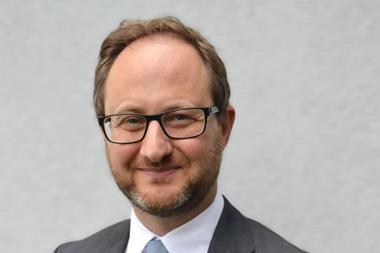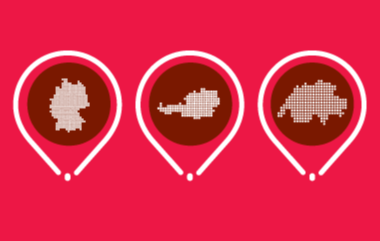A year ago, Germany's asset management industry was cheering amid a boom in corporate pensions. Driving the boom was a decision by German firms, particularly quoted multi-nationals, to phase out the traditional method of financing pension liabilities via balance sheet assets - book reserves - and instead employ vehicles known as contractual trust arrangements (CTAs).
Their decision was prompted by international accounting standards (IAS). Under IAS - mandatory for listed EU companies - pension liabilities met by balance sheet assets are considered unfunded. Noteably, when S&P's downgraded ThyssenKrupp to non-investment grade status in February 2003, on-balance-sheet pension obligations were specifically cited.
Corporate pension funding pumped cash to the tune of €16bn into funded vehicles last year. For asset managers, this meant a flurry of investment mandates, with CTAs proving a crucial part of their institutional business in Germany in 2006.
Four months into 2007, the large CTA deals are no longer in evidence. Most of the companies listed on the DAX30 index have established a CTA, even though the average funding level is 65%, according to the consultancy Rauser Towers Perrin. Despite the interest among the firms listed on Germany's blue-chip DAX index, external funding has not really caught on to the same degree among other listed firms.
Does the quiet surrounding CTAs mean Germany's corporate pension boom is ending? If so, that would be disheartening to asset managers, particularly foreign ones, which have recently arrived in Germany to take advantage of the boom.
But all with a vested interest in German corporate pensions can remain upbeat. Experts say that while the market will no longer see huge CTAs like those for RWE (€8bn) and E.ON (€5.4bn), the fund-driven boom is set to continue.
But that fact does not necessarily diminish the long-term potential for CTAs. And of course, the wave of pension funding in the last couple of years among the DAX30 companies leaves around 35% of liabilities still unfunded. Although the car giant Volkswagen set up a CTA in 2001, it still has around €14bn in pension liabilities on its balance sheet, the lion's share of which stems from Germany.
Energy giant RWE, for example, is currently in the process of funding its €8bn CTA - one of the largest so far. Experts also say that BMW may finally create the vehicle for €4.4bn in German pensions liabilities.
"The age of big CTAs is ending. But we are likely to see the creation of CTAs at German subsidiaries of foreign firms and at mid-size German firms which report under IAS," surmises Christian Mosel, managing director at Cominvest in Frankfurt.
Nikolaus Schmidt-Narischkin, head of pension solutions at DeAM, says: "CTAs are the norm now in the DAX range, but we're forgetting the huge mass of firms in Germany that still finance pensions internally. I would say that the off-balance sheet pension funding wave is still rising, witht the market between €3-6bn per annum." Schmidt-Narischkin's point is compelling considering that the firms he refers to hold more than €100bn in pension assets. It should be noted that a great number of these firms - essentially SMEs - do not report under IAS and therefore have no urgent need to create a CTA. Instead, they report under German accounting standards (HGB), which accepts internal finance of pensions as legitimate.
CTAs have yet to play a significant role among listed firms below the DAX range - including on the MDax, small cap SDax and technology-heavy TecDax. In the case of the MDax, Rauser Towers Perrin notes that while 41 of the 50 MDax firms have some type of external pension fund, the funding ratio of these firms is just 35%. A number of SMEs are adopting IAS as a precursor to listing on exchanges or issuing bonds. CTA volumes will be smaller than for DAX firms, but there should be no shortage of investment mandates.
Setting up a CTA is an expensive prospect for many SMEs. Apart from the required liquidity, they must pay fees to the lawyers, consultants and asset managers.
The SME must also guard the vehicle against insolvency by paying the maximum contribution to the PSV, the public association that insures corporate pensions.
To circumvent these barriers, some asset managers have created so-called group CTAs which, through economies of scale, reduce costs to SMEs. Schmidt-Narischkin says DeAM's group CTA has taken in €2bn in assets. Others with group CTAs include German private bank Metzler and Universal-Investment, the German fund administrator. Cominvest will launch its group CTA once it gets the green light from financial services regulator BaFin.
Further proliferation of CTAs will not be the only driver of a continued boom in German corporate pensions. Another impetus should come from Pensionsfonds, the pension vehicle most similar to a CTA. Created in 2001, Pensionsfonds were initially hampered by competitive disadvantages regarding the applicable discount rate for transferring liabilities from book reserves. Since September 2005, when the government removed this flaw, the vehicles have gained in popularity.
A recent example is a big outsourcing mandate won by Deutscher Pensionsfonds (DPF), a joint venture between DeAM and Swiss insurer Zurich.
In February, DPF took over €518m in pension assets from the German affiliate of French industrial firm Saint-Gobain.
Among single-employer Pensionsfonds, the vehicle created by the non-listed auto component maker Bosch has racked up an impressive €600m in assets, most of which is accounted for by transfers to cover balance sheet obligations. Pensionsfonds are also getting the attention of Dax firms. Siemens said it has created a Pensionsfonds to complement its existing CTA in financing €15bn in pension liabilities. RWE is planning a similar move after its CTA is set up.
Owing to the vehicle's current momentum, "Pensionsfonds could account for around one-third of total pensions assets within the next decade," declares Bernhard Wiesner, head of corporate pensions at Bosch. German pension assets are approaching €400bn, but Pensionsfonds only account for a fraction of that figure.
Wiesner points out that because Pensionsfonds are an innovative financing vehicle and thereby deployable on a European level, the former could ultimately become the vehicle of choice for German multinationals.
Pensionsfonds are proving to be an attractive alternative to CTAs for several other reasons, incuding cost. As Pensionsfonds must by statute provide a 0% guarantee, firms employing them only pay one-fifth of the contribution to the PSV to protect them against insolvency. "Our contribution to the PSV, on the other hand, is a huge expense," notes Werner Schafferdt, a director in charge of the €8.9bn CTA set up by car maker DaimlerChrylser.
Pensionsfonds also have a greater ability to write off pension expenditures from their taxes than CTAs. Other advantages include professional management of retiree benefits - Pensionsfonds are set up to provide a life-long pension, while CTAs are strictly funds - and pension portability.
Schmidt-Narischkin notes that CTAs provide firms far more flexibility in terms of funding and asset management than Pensionsfonds.
"CTAs can be partially funded. With Pensionsfonds there is a requirement on the firm to provide liquidity if the vehicle is underfunded," he says. "And because Pensionsfonds must legally invest according to qualitative constraints set by the regulator BaFin, they face some investment restrictions. CTAs are completely free of such restrictions which means, for example, that they can invest more heavily in hedge funds or other exotic asset classes than
Pensionsfonds," he adds.
Pensionsfonds backers are lobbying the government to enable the vehicles to provide higher pension benefits, like CTAs, and to relax the liquidity requirement in cases of underfunding.
For now, IAS-bound firms will likely follow the example of Siemens and RWE in employing both vehicles. "We expect that just like some of the bigger listed firms, those in the middle range will combine CTAs and Pensionsfonds for their corporate pensions," says Reiner Schwinger, managing principal at German consultant Rauser Towers Perrin.
As in the cases of Siemens and Saint-Gobain, the firms' strategy involves using Pensionsfonds to finance and service obligations against retired workers while using CTAs against those from current employees. This makes sense owing to the Pensionsfonds' raison d'etre of providing a life-long pension. Whatever vehicle is chosen, outsourcing of pension liabilities in corporate Germany will continue unabated. For the foreseeable future, plenty of German firms will stick to the traditional method of internal finance.
Though many SMEs still report under HGB, there are strong arguments in favour of the traditional method.
The most compelling one is that by creating a fund for pensions, valuable assets that could otherwise be used to grow one's business are removed.
"It's also a fallacy to state that a company can achieve a higher return on its pension assets by creating an external fund," adds Richard Herrmann, board executive at Cologne based pensions adviser Heubeck AG. "Even by keeping the assets on the balance sheet, a company can at least achieve the same returns by simply following the same investment strategy and working with the same asset managers as it would with a fund."
External funds do not lessen the burden of meeting pension obligations. Firms employing the funds are dependent on market returns. And if these returns prove disastrous, the fund can turn out to be a huge liability.
Schmidt-Narischkin acknowledges the limitations of external funds. "I'm not one of those who say that all firms must finance their pension liabilities externally," he says. "Internal finance remains a viable option, because firms may want the money to grow their business and because their pensions are anyway insured by the PSV. Rating agencies as well as banks have finally accepted the option system and no longer penalise firms using it with lower credit ratings," he adds.
Less well known than German CTAs or Pensionsfonds is another vehicle for outsourcing corporate pension liabilities, the ‘Renter-GmbH', or ‘Pensioners Ltd'.
Recently legalised by the German government, the Rentner-GmbH is an option for a firm that wishes to completely free itself from its pension liabilities.
It works like this: with the help of a lawyer, a firm sets up a Rentner-GmbH and transfers pension liabilities to it. A decade later, it loses legal responsibility for those liabilities; pensioners can only make legal claims against the vehicle.
The Rentner-GmbH differs from CTAs in that firms employing the latter vehicle remain legally responsible for pension liabilities.
In other words, CTAs are funds set up to pay pensions, and if the funds need capital to do so, they get it from the firms that created them.
According to Bernd Klemm, partner at the law firm Lovells in Munich, the Renter-GmbH is a cheaper alternative to other outsourcing vehicles.
These include Pensionskassen, the traditional insurance-based pension vehicle, and those offered by life insurers. And just like all external pension funds, "the Rentner-GmbH improves a firm's base capital and, for the most part, a better credit rating," says Klemm.
Citing the fact that Lovells has already won several mandates to create the vehicles, Klemm believes the Rentner-GmbH will establish itself as a viable alternative to other outsourcing vehicles.












No comments yet